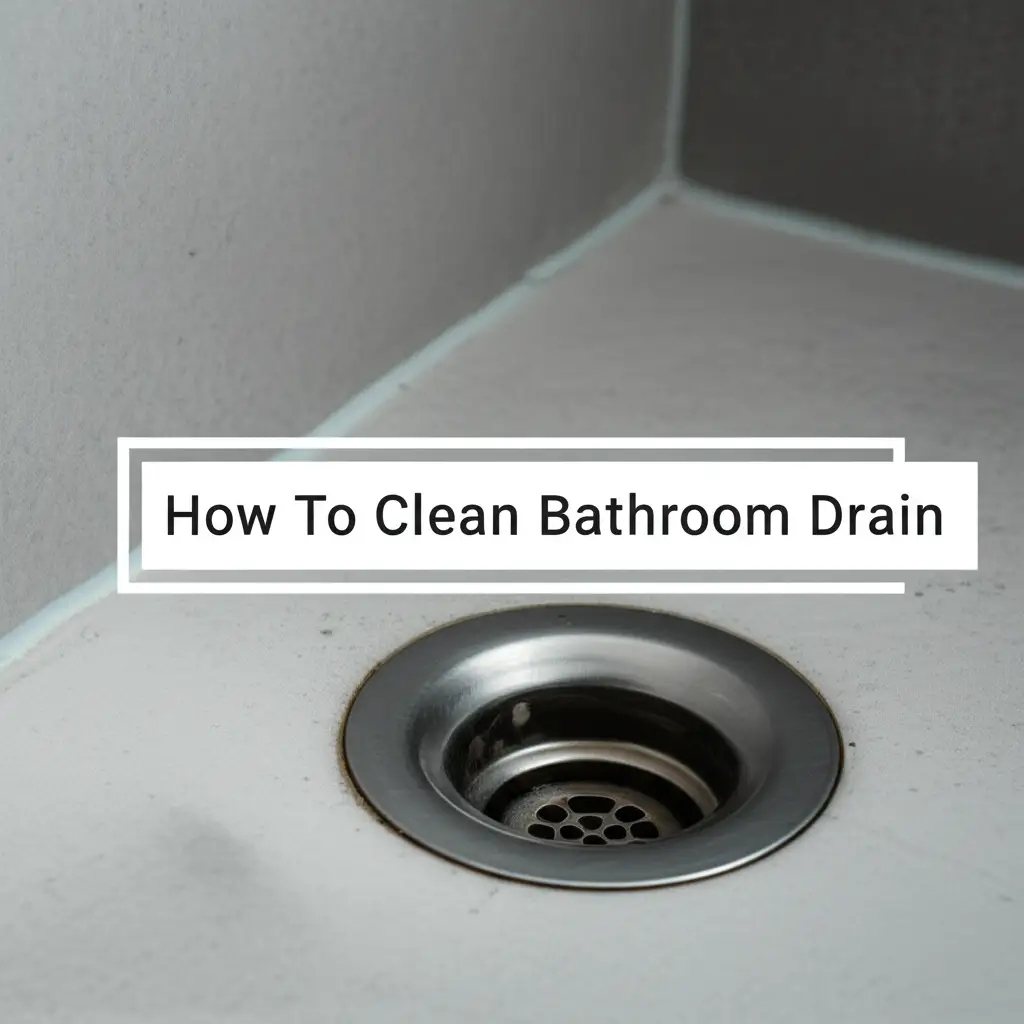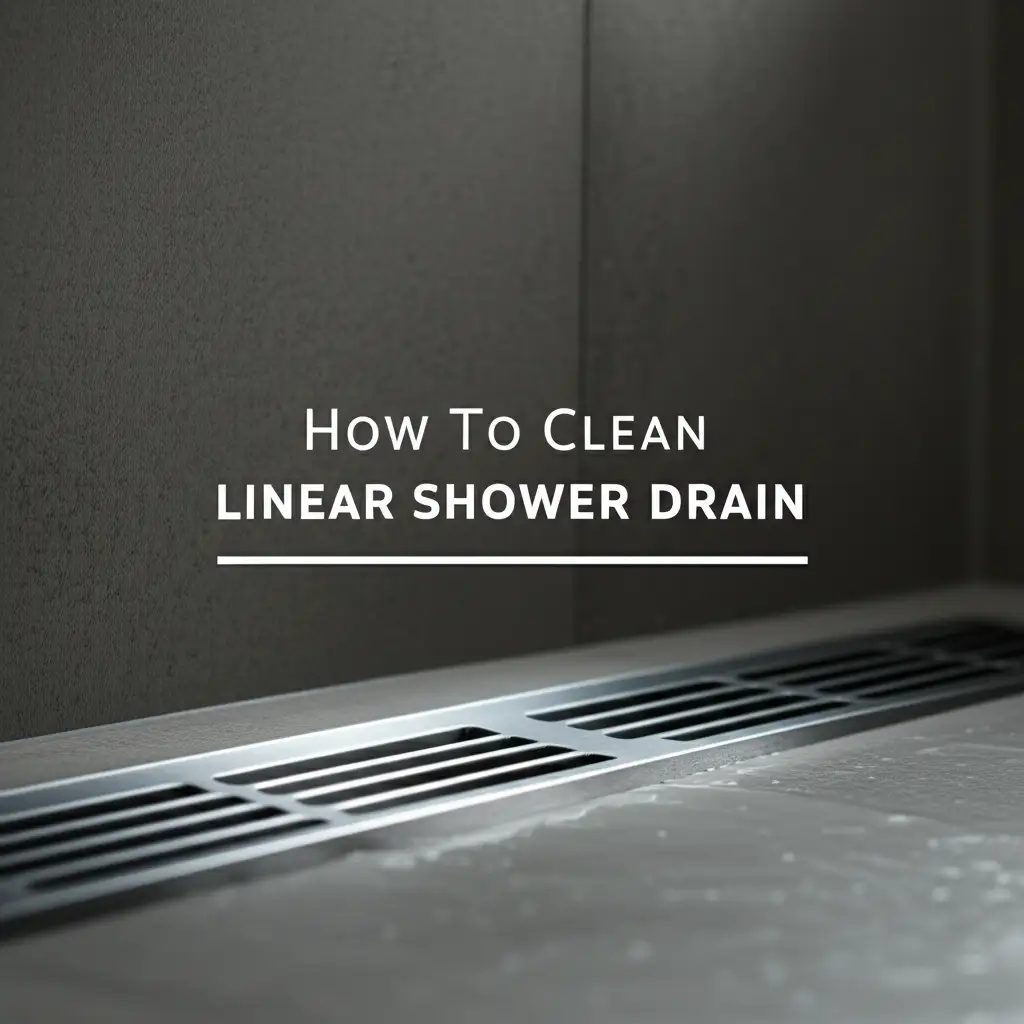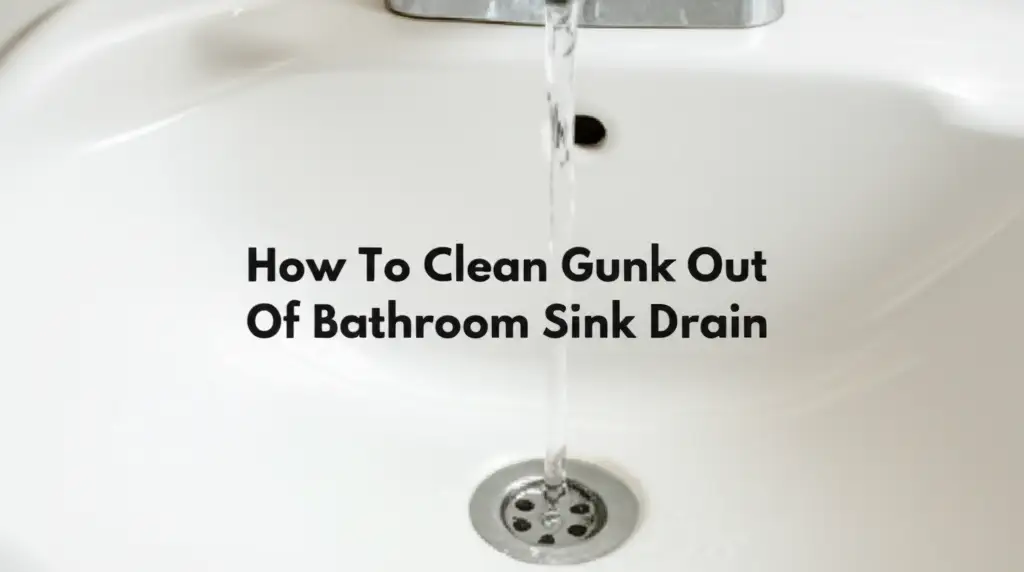· Home Maintenance · 14 min read
How To Clean Bathroom Drain

How To Clean Bathroom Drain: A Comprehensive Guide
A slow or clogged bathroom drain is a common household problem. It leads to standing water and unpleasant odors. Nobody enjoys stepping into a shower with pooling water or seeing toothpaste residue linger in the sink. I know how frustrating this can be.
Keeping your bathroom drains clear ensures proper function and hygiene. This guide offers practical steps to effectively clean your bathroom drain. We will cover everything from simple DIY solutions to when you need to call a professional. Get ready to enjoy a free-flowing drain once again.
Takeaway
- Identify the clog: Hair and soap scum are common culprits in bathroom drains.
- Start with natural remedies: Baking soda and vinegar often clear minor blockages.
- Use manual tools for tougher clogs: A plunger or drain snake can remove stubborn obstructions.
- Clean the pop-up drain: This often overlooked component collects a lot of gunk.
- Prevent future clogs: Regular maintenance keeps your drains clear and functional.
To clean a bathroom drain, first remove the drain stopper and any visible debris. For minor clogs, pour boiling water, followed by a baking soda and vinegar solution. For tougher blockages, use a plunger or a drain snake to physically remove the obstruction. Regular maintenance helps prevent future clogs.
Why Your Bathroom Drain Clogs So Easily
Bathroom drains face unique challenges. Hair is the biggest culprit. It combines with soap scum and other debris. This mixture creates stubborn blockages.
Every time you shower or wash your hands, small amounts of hair go down the drain. Over time, these strands accumulate. They form a tangled mess. Soap scum also contributes significantly. It hardens around the hair, creating a sticky, solid mass.
Other items like toothpaste, beauty product residue, and dirt also add to the problem. These materials build up on pipe walls. They narrow the drain opening. This slows water flow and eventually causes a full blockage.
Understanding these causes helps you choose the right cleaning method. It also helps you take preventative measures. Addressing clogs quickly prevents larger plumbing issues. This saves you time and money.
Essential Tools and Supplies for Drain Cleaning
Before you start cleaning, gather the right tools. Having everything ready makes the job easier and faster. You likely have many of these items around your home. Proper tools help you tackle different types of clogs effectively.
Here is a list of what you might need:
- Rubber Gloves: Protect your hands from grime and chemicals.
- Boiling Water: Can dissolve some grease and soap scum.
- Baking Soda: A natural abrasive and odor neutralizer.
- White Vinegar: Reacts with baking soda to create a cleaning action.
- Plunger (Flange or Cup Style): Creates suction to dislodge clogs. A flange plunger is often better for toilets, but a cup plunger works for sinks.
- Drain Snake (Hand Auger): A flexible tool to reach and pull out deep clogs.
- Screwdriver: Often needed to remove or loosen drain covers or pop-up assemblies.
- Pliers: Can help with stubborn nuts or bolts on the drain assembly.
- Bucket or Pan: To catch water or debris when working under the sink.
- Old Towels: For wiping up spills and messes.
Choosing the right tool depends on the clog’s severity. Start with simpler, less invasive methods first. Move to more aggressive tools if needed. Always prioritize safety when working with drains.
Simple Home Remedies for Minor Clogs
For minor clogs or slow drains, you can often use natural, household items. These methods are gentle on your pipes. They are also environmentally friendly. It is wise to try these first before using harsh chemicals.
The Boiling Water Method
This is the simplest starting point. Boiling water helps dissolve soap scum and grease. It does not work on hair clogs. You need to be careful with PVC pipes; very hot water can damage them.
First, remove any standing water from the sink or tub. Pour a kettle of boiling water slowly down the drain. Wait a few minutes. Check if the water starts draining faster. You can repeat this step two or three times.
Baking Soda and Vinegar Solution
This classic DIY method creates a fizzing reaction. This reaction helps break down clogs. It also neutralizes odors. This method is safe for all types of pipes.
Here is how to use it:
- Remove Standing Water: Clear out any water in the sink or tub.
- Pour Baking Soda: Pour one cup of baking soda directly down the drain. Try to get as much as possible down the opening.
- Add Vinegar: Follow with one cup of white vinegar. You will see fizzing immediately. This reaction loosens grime.
- Cover the Drain: Place a drain stopper or a rag over the drain opening. This helps keep the chemical reaction inside the pipe.
- Wait: Let the mixture sit for at least 30 minutes, or even overnight for tough clogs.
- Flush with Hot Water: After waiting, flush the drain with a kettle of hot or boiling water. The hot water helps wash away the loosened debris.
You may need to repeat this process if the clog is stubborn. This method is effective for soap scum and minor organic buildup. It is a great way to clean your sink drain with vinegar. This natural approach is a good first step in how to clean bathroom with vinegar for various household tasks.
Tackling Tougher Clogs with Manual Methods
When home remedies do not work, it is time for manual tools. These tools provide more power to remove stubborn clogs. They often offer a quicker solution for serious blockages. Remember to wear gloves for hygiene.
Using a Plunger Effectively
A plunger is a simple yet powerful tool. It creates suction to dislodge clogs. Make sure you use the right type of plunger. A cup-style plunger works best for sinks and tubs.
Here are the steps:
- Remove Drain Stopper: Take out any drain stopper or cover.
- Fill with Water: If no water is standing, add enough water to cover the plunger cup. This helps create a good seal.
- Create a Seal: Place the plunger over the drain opening. Ensure a tight seal around the entire opening.
- Plunge Vigorously: Push down and pull up the plunger rapidly several times. Keep the seal intact.
- Check Drainage: Remove the plunger and check if the water drains. If not, repeat the process.
You might need to try plunging several times. Persistence often pays off. Sometimes, the first few plunges just loosen the clog.
Mastering the Drain Snake (Hand Auger)
A drain snake is a flexible cable with a small auger or hook at the end. It reaches deep into the drain to grab or break up clogs. This tool is especially effective for hair clogs. It can clean hair out of a bathroom sink drain or a shower drain.
Follow these steps:
- Insert the Snake: Feed the snake’s end into the drain opening. Push it gently.
- Navigate Obstacles: When you feel resistance, rotate the handle to help the snake move past bends. Do not force it.
- Reach the Clog: Keep pushing until you hit the clog. You will feel strong resistance.
- Hook or Break Up the Clog: Rotate the snake’s handle clockwise to grab the clog. You might feel it hook onto the hair or debris. Alternatively, push and pull the snake to break the clog apart.
- Pull Out Debris: Carefully pull the snake back out of the drain. It should bring out the clog with it. You might be surprised by how much gunk you remove.
- Flush the Drain: Run hot water down the drain for several minutes to flush away any remaining debris.
For specific clogs, such as those made of gunk, a drain snake is useful to clean gunk out of a bathroom sink drain. When dealing with shower drains, this method is highly effective for removing hair. This ensures you can clean hair from a shower drain properly. Always clean the snake after use for hygiene.
Cleaning Your Pop-Up Drain Assembly
Many bathroom sinks have a pop-up drain stopper. This component is a major magnet for hair, soap scum, and gunk. Often, a slow drain is due to a dirty pop-up assembly, not a deep pipe clog. Cleaning this part can resolve many drain issues.
Here is how to clean it:
- Remove the Stopper: Locate the pivot rod behind the sink. It is usually a small nut or clip connecting to the pop-up stopper. Loosen the nut or remove the clip to disconnect the rod. You can then pull the pop-up stopper straight up and out of the drain opening.
- Clean the Stopper and Pivot Rod: You will likely find a significant amount of hair and black gunk wrapped around the stopper and the pivot rod. Use old paper towels or a rag to wipe away all the debris. A small brush or even an old toothbrush can help scrub away stubborn grime. You might also want to rinse them under running water.
- Inspect the Drain Opening: Look down into the drain opening with a flashlight. You might see more hair or gunk just below where the stopper sat. Use needle-nose pliers or tweezers to pull out any visible debris.
- Reassemble: Once clean, reinsert the pop-up stopper into the drain. Reconnect the pivot rod and tighten the nut or reattach the clip. Test the stopper’s function and check for leaks.
Regularly cleaning your pop-up drain assembly can prevent many future clogs. It is an easy maintenance step. This cleaning also helps eliminate foul odors coming from the drain. Knowing how to clean a pop-up drain is a valuable skill for any homeowner.
When to Call a Professional Plumber
Sometimes, a clog is too tough for DIY methods. Knowing when to call a professional plumber saves you time, effort, and prevents further damage. Do not hesitate to seek expert help when necessary. Professionals have tools and knowledge that homeowners typically do not.
Consider calling a plumber if:
- Clogs are Recurring: If the same drain keeps clogging despite your cleaning efforts, there might be a deeper issue. This could be a structural problem in the pipes or a larger obstruction.
- Multiple Drains are Clogged: If your toilet, sink, and shower drains are all slow or clogged, it suggests a problem in the main sewer line. This requires professional diagnosis and powerful equipment.
- Foul Odors Persist: Lingering sewer smells, even after cleaning, can indicate a deeper blockage or vent pipe issue. Plumbers can identify and fix these problems.
- Water Backs Up: If water backs up into other fixtures (e.g., flushing the toilet causes sink water to rise), it is a sign of a significant blockage in the main line. This is an urgent situation.
- No DIY Method Works: You have tried boiling water, baking soda, vinegar, plunging, and snaking, but the drain remains blocked. This means the clog is too stubborn or too far down.
- You Suspect Pipe Damage: If you hear strange gurgling noises or notice leaks after a clog, forcing it might damage pipes. A professional can assess the situation safely.
- You Have Old Pipes: Older plumbing systems are more fragile. Aggressive DIY attempts can cause breaks or cracks. A plumber knows how to handle delicate pipes.
Plumbers use specialized tools like hydro-jetters and video inspection cameras. They can pinpoint the exact location and nature of the clog. This ensures a complete and lasting repair. Investing in professional help for severe clogs protects your plumbing system.
Preventing Future Bathroom Drain Clogs
Prevention is always better than cure. Regular maintenance keeps your bathroom drains clear and free-flowing. It saves you from the hassle of dealing with future clogs. Adopting a few simple habits can make a big difference.
Here are effective strategies to prevent drain clogs:
- Use Drain Screens or Hair Catchers: Place a mesh drain screen or hair catcher over your sink and shower drains. These inexpensive devices collect hair and larger debris. They stop it from going down the drain. Clean them after every use. This is the simplest way to prevent hair clogs.
- Flush with Hot Water Regularly: After each use, especially for sinks, run hot water for a minute. This helps wash down any soap scum or toothpaste residue before it hardens. For showers, let the water run a bit longer.
- Avoid Pouring Grease Down the Drain: While less common in bathrooms, some lotions or hair products can contain oils or fats. These can congeal in pipes. Dispose of such products in the trash, not the drain. Learn more about how to clean grease from drain pipes to keep your entire home’s plumbing clear.
- Perform Regular Baking Soda and Vinegar Treatments: Every month, perform the baking soda and vinegar flush. Even if your drain is not clogged, this helps break down minor buildup. It keeps the pipes clean and clear. This proactive step is simple and effective.
- Clean Pop-Up Drain Assemblies Often: Make it a routine to pull out and clean your pop-up drain stopper every few months. This component traps a lot of hair and gunk. A quick wipe down prevents major blockages.
- Limit Foreign Objects: Teach family members to avoid flushing anything other than toilet paper. For sinks, be mindful of small items that can fall into the drain.
Implementing these preventative measures extends the life of your plumbing system. It also ensures you always have clear, functional drains. A little effort now saves a lot of headaches later.
FAQs About Cleaning Bathroom Drains
How often should I clean my bathroom drain?
You should perform a preventative flush with baking soda and vinegar monthly. Physically removing debris from the drain stopper or hair catcher should happen weekly or after every few uses. If you notice slow drainage, address it immediately. This prevents minor issues from becoming major clogs.
What causes black gunk in my bathroom drain?
Black gunk is usually a mixture of hair, soap scum, body oils, and biofilm. Biofilm is a collection of bacteria that thrives in damp, dark environments like drains. This combination creates a slimy, foul-smelling buildup. Regular cleaning prevents its accumulation and eliminates odors. Understanding how to clean black stuff in a sink drain is crucial for bathroom hygiene.
Can I use chemical drain cleaners?
I do not recommend chemical drain cleaners. They contain harsh chemicals that can damage pipes over time. They are particularly harmful to older pipes or septic systems. These cleaners can also pose health risks due to fumes and skin contact. Natural remedies and manual tools are safer and often more effective.
What is the best way to remove hair from a bathroom drain?
The best way to remove hair is by using a drain snake or by manually pulling out the pop-up stopper and cleaning it. A drain snake is designed to hook onto hair clogs and pull them out. For sinks with pop-up stoppers, simply remove the stopper and clear the hair caught around it.
My shower drain is linear, does that change how I clean it?
Cleaning a linear shower drain involves similar principles but with a different access method. Most linear drains have a removable grate. Lift this grate to access the drain channel. You can then scoop out visible hair and debris. Flush with hot water or a baking soda and vinegar solution. Knowing how to clean a linear shower drain ensures all types of shower setups stay clear.
How do I prevent drain odors?
Regularly flushing your drains with a baking soda and vinegar solution helps prevent odors. This mixture neutralizes smells and breaks down odor-causing gunk. Also, ensure your drain traps (P-traps) always have water in them. The water acts as a barrier to sewer gases.
Conclusion
Cleaning your bathroom drain does not have to be a daunting task. By understanding the common causes of clogs and having the right tools, you can easily tackle most blockages yourself. Starting with simple home remedies like baking soda and vinegar can often resolve minor issues. For tougher clogs, a plunger or drain snake provides a powerful solution.
Remember, regularly cleaning your pop-up drain assembly and using drain screens can prevent many future headaches. Adopting preventative habits saves you time and money. If you face a stubborn, recurring, or complex clog, do not hesitate to call a professional plumber. Keeping your bathroom drain clear ensures a clean, functional, and pleasant bathroom environment. Now go enjoy your free-flowing drains!
- how to clean bathroom drain
- clogged drain
- drain cleaning
- DIY plumbing
- drain maintenance
- bathroom cleaning




